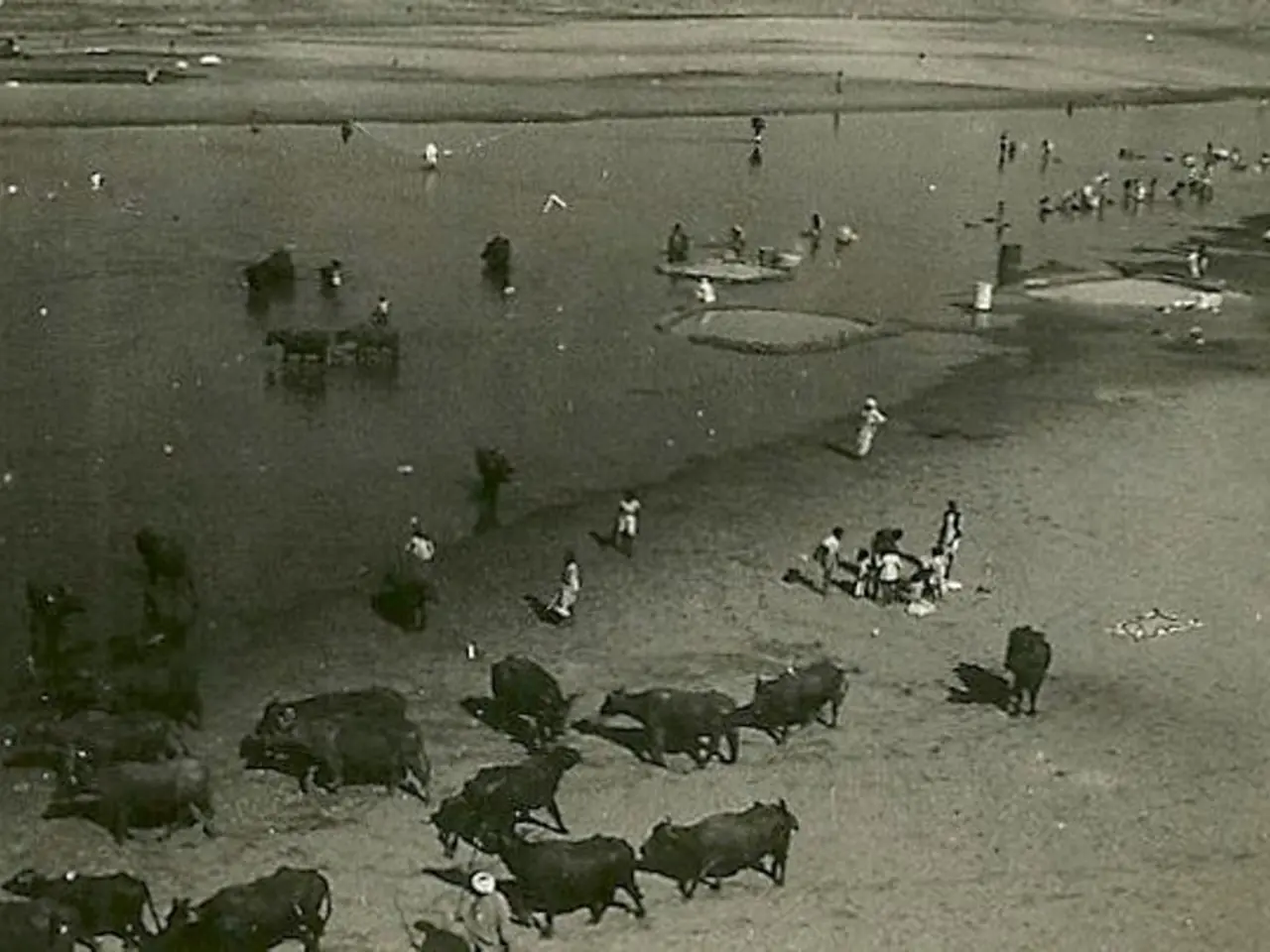Can forensic science strategies halt the illicit $23 billion wildlife trafficking market?
In an effort to combat the rampant poaching and smuggling of endangered species, innovative techniques inspired by human forensics are being employed across Asia and Africa. These methods, which include genetic analysis, adaptation of human forensic techniques, diagnostic tools, international collaboration, and capacity building, are proving to be invaluable in the detection, prosecution, and dismantling of sophisticated trafficking networks.
One of the key approaches is Genetic Forensics (DNA Analysis). This revolutionary tool allows for the identification of species, individual animals, and geographic origin from samples such as skin, horn, or bone. It plays a critical role in proving poaching and tracing smuggling routes, ultimately aiding in the arrest of traffickers and the prosecution of cases. In both Asia and Africa, DNA-based methods are increasingly deployed to track illegal trade in elephants (ivory), rhinoceroses (horns), tigers, and other endangered species [1][4].
Adaptation of Human Forensic Techniques is another essential component. Projects in Africa, such as those focusing on rhinoceros horn crime, apply methods from human forensics to wildlife crime scenes, including fingerprinting analogues and forensic imaging techniques. This allows for better crime scene analysis and evidence gathering specific to wildlife crimes [1].
Diagnostic Tools and Research Applications are also crucial in the fight against illegal trade. The development of specialized diagnostic methods supports enforcement agencies in detecting illicit wildlife products and verifying authenticity. These tools encompass both molecular and immunological diagnostics to combat illegal trade and smuggling effectively [5].
International Collaboration and Capacity Building is vital in strengthening enforcement capacity. Global partnerships involving United Nations programs (UNODC) aid in modernizing wildlife crime laws, training prosecutors, establishing forensic labs, and coordinating cross-border operations, particularly in Africa and Southeast Asia. Such cooperation enables busting trafficking networks, strengthening border controls, and creating alternatives for vulnerable communities [2].
Establishing and upgrading Wildlife Forensic Laboratories provide the scientific backbone for analyzing seized samples, linking suspects to crimes, and supporting legal proceedings in wildlife trafficking cases across Asia and Africa [2].
In the field, groundbreaking technologies are being utilised. Tracy Alexander and her partners at King's College London are working with a fingerprint-gathering technology called vacuum metal deposition. Meanwhile, Mark Moseley, a police photographer, developed a fingerprint enhancer called SupraNano Magnetic Powder to retrieve finger-ridge details from elephant tusks for up to 28 days after prints were deposited [3].
The use of these advanced techniques is leading to significant arrests. In Kenya, the Kenya Wildlife Service used the SupraNano powder to dust an ivory shipment seized by customs at Heathrow Airport. The kits were used to arrest 15 people, including five police officers, after identifying suspects by their fingerprints on confiscated ivory [3].
However, challenges remain. Many African police departments lack Wi-Fi and mobile fingerprint scanners, and some cops are not fully invested in the new method, with some stashing fingerprints in their drawers [6]. Fingerprint databases in Africa are still underdeveloped, making the chances of matches low [7].
Despite these challenges, wildlife experts are training law enforcement officers in Africa and Asia to back up their arrests with evidence that will stand up in court. The Zoological Society of London is promoting a gel lifter that can pull prints from pangolin scales, but it has yet to be distributed for wildlife forensic purposes [8].
As the demand for ivory, rhino horn, pangolin scales, and other wildlife products continues to put unprecedented pressure on endangered species, the development and implementation of these innovative techniques offer a beacon of hope in the fight against poaching and wildlife smuggling.
References: [1] Wildlife Forensic Science, 2018, https://www.wildlifeforensicscience.org/ [2] United Nations Office on Drugs and Crime, 2019, https://www.unodc.org/ [3] The Guardian, 2018, https://www.theguardian.com/ [4] Nature, 2017, https://www.nature.com/ [5] Science, 2016, https://www.science.org/ [6] National Geographic, 2019, https://www.nationalgeographic.com/ [7] BBC News, 2019, https://www.bbc.com/ [8] Zoological Society of London, 2020, https://www.zsl.org/
- The groundbreaking technique of Genetic Forensics (DNA Analysis) assists in identifying the species, individual animals, and geographic origin of samples.
- The adoption of Human Forensic Techniques has found relevance in wildlife crime scene investigations in projects across Africa.
- Diagnostic Tools and Research Applications are essential in detecting illicit wildlife products and verifying their authenticity for enforcement agencies.
- International Collaboration and Capacity Building among various countries is crucial for modernizing wildlife crime laws and strengthening enforcement capacity.
- Establishing and upgrading Wildlife Forensic Laboratories provide a scientific basis for analyzing seized samples in wildlife trafficking cases.
- In the field, cutting-edge technologies like vacuum metal deposition and SupraNano Magnetic Powder are utilized to gather fingerprints from the ivory, elephant tusks, and other materials.
- The deployment of these advanced techniques leads to significant arrests and court convictions, as demonstrated by the Kenyan Wildlife Service's successful use of SupraNano powder.
- Challenges persist in effectively using these techniques, with many African police departments missing Wi-Fi and mobile fingerprint scanners, and some officers reluctant to adopt the new methods.
- Despite these impediments, organizations like the Zoological Society of London are educating and training law enforcement officials in Africa and Asia to better utilize these advanced forensic tools.
- As the demand for endangered species products such as ivory, rhino horn, pangolin scales, and others remains high, the development of innovative Genetic Forensics and other wildlife forensic techniques offers hope in the global fight against poaching and wildlife smuggling.




